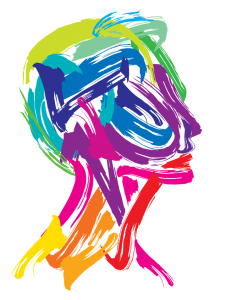ADOBE ILLUSTRATOR
Our Adobe Illustrator Professional course is designed as job oriented course for graphics designers and university students.
Adobe Illustrator is a program used by both artists and graphic designers to create vector graphics. These graphics will then be used for company logos, promotional uses or even personal work, both in print and digital form.
Vector graphics is the use of geometrical primitives such as points, lines, curves, and shapes or polygons—all of which are based on mathematical expressions—to represent images in computer graphics.
This course will cover :
- Logo Designing
- Brochure Designing
- Visiting Cards and Letterheads
- Panaflex banner advertisments
- Facebook Coverpages
- Graphics for Websites and Apps
- and a lot more…

Adobe Illustrator CS 2024! This course structure will guide beginners through foundational skills and into more advanced Illustrator techniques, including new features and tools specific to the 2024 version.
Course Overview:
Duration: 8–12 weeks
Level: Beginner to Intermediate
Prerequisites: Basic computer skills
Goals: Develop skills to create vector graphics, illustrations, and designs using Adobe Illustrator CS 2024. Gain confidence with Illustrator’s tools, workflows, and techniques for professional design work.
Module 1: Getting Started with Adobe Illustrator
- Introduction to Adobe Illustrator and the Interface
- Overview of Adobe Illustrator and its uses in design.
- Exploring the workspace, toolbars, and panels.
- Customizing the workspace for different project types.
- Setting Up Documents and Understanding Artboards
- Creating new documents with different presets and sizes.
- Working with multiple artboards for design efficiency.
- Managing document settings and color modes (CMYK vs. RGB).
- Basic Drawing Tools and Shapes
- Using basic shapes: rectangles, ellipses, polygons, stars.
- Understanding and manipulating the Selection and Direct Selection tools.
- Exploring the Shaper Tool and Shape Builder for complex shapes.
- Working with Layers
- Understanding layers and organizing objects.
- Locking, hiding, and reordering layers.
- Creating reusable design elements with layer management.
Module 2: Core Drawing and Designing Techniques
- Creating and Editing Paths
- Using the Pen tool for precision drawing.
- Modifying paths with Anchor Points and handles.
- Using the Curvature Tool for smooth, freeform shapes.
- Color, Gradients, and Patterns
- Applying colors, fills, and strokes to objects.
- Using the Color Guide and Swatches panels.
- Creating and applying gradients, patterns, and textures.
- Using the Pencil, Paintbrush, and Blob Brush Tools
- Freehand drawing with the Pencil and Paintbrush tools.
- Exploring the Blob Brush for solid vector shapes.
- Editing paths created with these drawing tools.
- Shape Building and Pathfinder Techniques
- Combining shapes with the Shape Builder Tool.
- Using Pathfinder operations to unite, subtract, intersect, and exclude shapes.
- Creating complex, custom vector graphics.
Module 3: Typography and Text Effects
- Working with Text in Illustrator
- Adding point and area text.
- Customizing font styles, sizes, and alignment.
- Creating text on paths and shapes.
- Advanced Typography Techniques
- Exploring Character and Paragraph Styles for consistency.
- Adjusting kerning, tracking, and leading.
- Using the Touch Type Tool for unique typography designs.
- Text Effects and Warp Transformations
- Creating text effects using gradients and outlines.
- Using Envelope Distort for custom text shapes.
- Applying warp and 3D effects to text.
Module 4: Advanced Illustration Techniques
- Using Brushes and Effects
- Working with various Illustrator brushes (Calligraphic, Pattern, Scatter, Art brushes).
- Customizing and creating unique brushes.
- Applying effects like drop shadow, glow, and blurs.
- Creating and Editing Symbols
- Using the Symbols panel to save time and streamline workflow.
- Creating custom symbols for repetitive elements.
- Applying the Symbol Sprayer Tool for creative effects.
- Using the Appearance Panel for Layered Effects
- Exploring the Appearance panel to layer fills, strokes, and effects.
- Applying multiple appearances for depth and texture.
- Creating reusable graphic styles.
Module 5: 3D, Perspective, and New Features in CS 2024
- Using 3D Tools in Illustrator
- Introduction to 3D effects (Extrude, Bevel, Rotate).
- Creating 3D text and objects.
- Adding textures and lighting effects.
- Perspective Drawing and Grids
- Understanding perspective grids for depth.
- Drawing and editing shapes in perspective.
- Adding artwork and symbols in perspective.
- New Features in Adobe Illustrator CS 2024
- Exploring the latest tools and updates.
- Using AI-driven features and improvements.
- Optimizing workflow with enhanced tools.
Module 6: Working with Images, Exporting, and Project Workflow
- Importing and Tracing Images
- Importing raster images and placing them in designs.
- Using Image Trace to convert raster images into vector graphics.
- Refining traced images and expanding paths.
- Preparing Files for Print and Web
- Understanding export options and formats (PDF, PNG, SVG, etc.).
- Optimizing vector artwork for web and social media.
- Setting up bleed and crop marks for print projects.
- Final Project: Creating a Portfolio Piece
- Applying learned techniques to create a portfolio-ready design.
- Presenting a final project with file preparation and export.
- Reviewing best practices and design considerations.
Assessment and Course Wrap-Up
- Review and Q&A – Recap of key topics and answering student questions.
- Final Assessment – Completion of a design project that incorporates skills from all modules.
- Portfolio Tips – How to showcase work and continue developing skills after the course.
